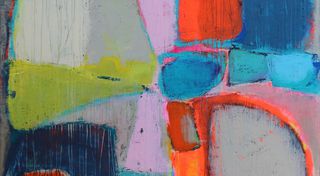

Biography
Besides being a scientific researcher and doctor, Abel Salazar was also a painter, sculptor, copperplate engraver, essayist, and art critic. The artwork of the Portuguese artist forestalled the neo-realist movement in Portuguese painting. Many of his works feature portraits and landscapes, but he also enjoyed exploring the intricacies of the female form. Today Salazar's works are part of numerous private and public collections, including the National Museum Soares dos Reis, House-Museum Dr. Anastácio Gonçalves, and the Museum of Contemporary Art.
Abel de Lima Salazar was born in 1889 in Guimarães, Portugal. In school, inspired by political movements in the country, together with his friends, he published , a Republican school newspaper. In the paper, he not only expressed his opinions about Republican ideology but also published his art which featured caricatures of teachers and friends. Salazar graduated from the Faculty of Medicine of the University of Porto with top honors and later founded and became a professor of the Histology and Embryology department, which is still in operation.
Abel Salazar published numerous essays documenting his medical research, which were disseminated all around the world, gaining him international recognition. Unfortunately, after years of working tirelessly as a result of a lot of pressure, he suffered a nervous breakdown and took a four-year break. This time he used to pursue his artistic passion by creating landscapes, portraits, murals, drawings, watercolors, and engraved copper printings.
In his extensive oeuvre, one can clearly see Salazar's humanist spirit and drive for experimentation. Especially concentrated on depicting women, he showed their daily lives and work. Full of abundant realism and expressiveness of line and light, his work spoke of great joy and intimacy. Abel Salazar published research on the mechanistic theories of E. Krestschner in a book entitled (1940).
With the change in the political climate and the rise of fascism, he was expelled from teaching at the university because of "." However, this did not stop him from expressing his anti-fascist view and democratic ideals. Essays on the philosophy of religions and sciences, Salazar published in several books, newspapers, and magazines, including Seara Nova, Esfera, O Diabo, O Trabalho, and Sol Nascente.
When Abel Salazar suddenly passed away in 1946 in Lisbon, thousands of people came to pay their respect. Ten ordinary people carried his coffin and, after a few steps, would let somebody else continue. The dictatorship tried several times to divert the procession and even arrested several people. The scientist, artist, and writer is one of the most renowned figures in Portuguese history.
Nationality




